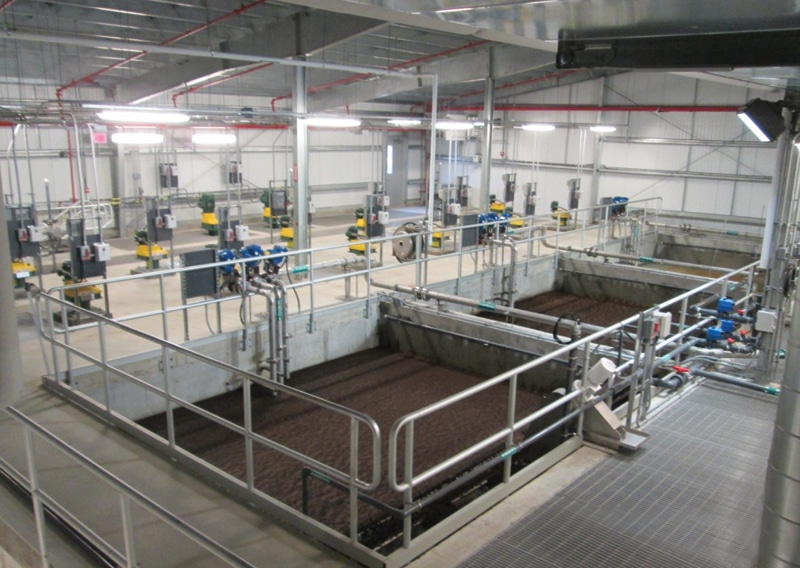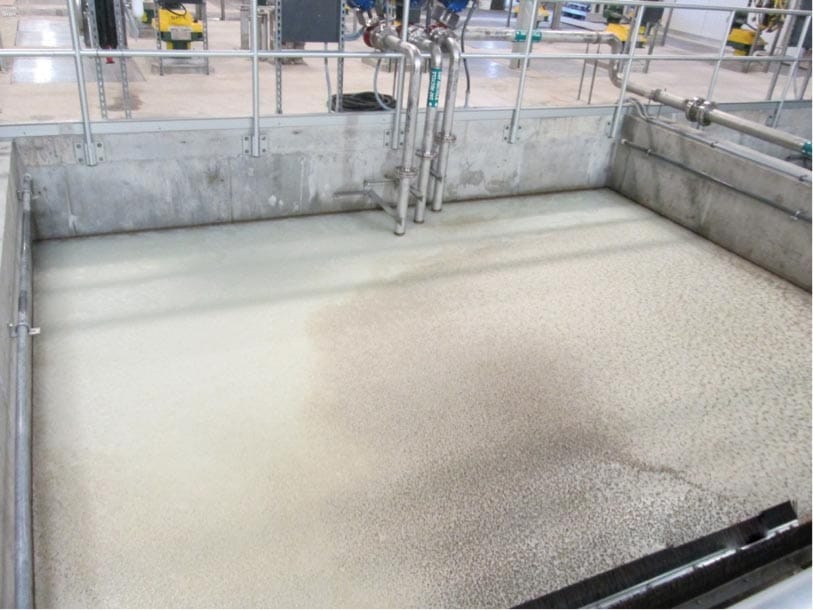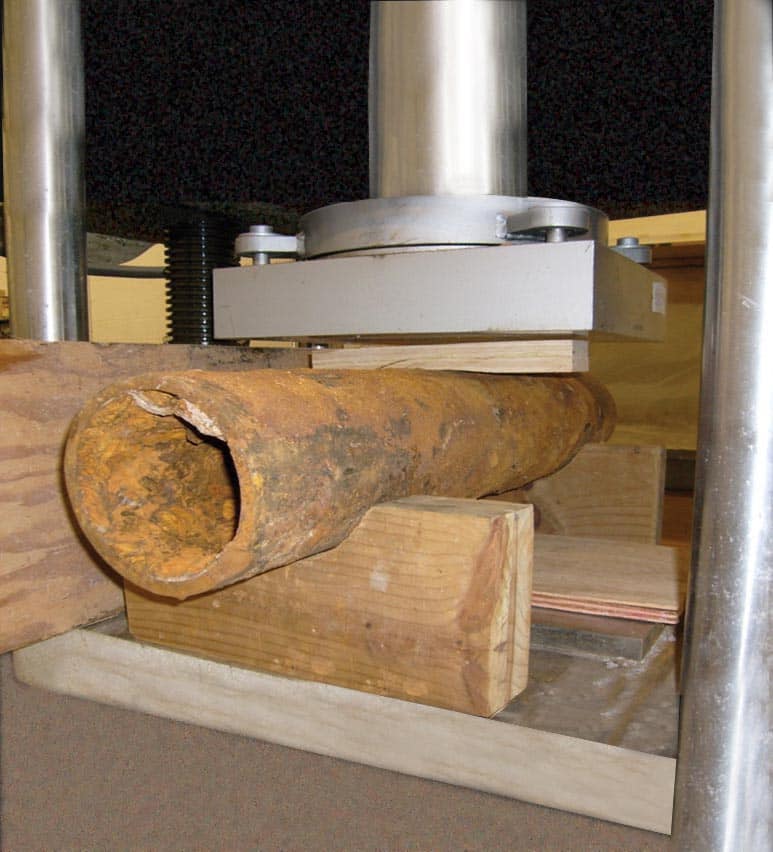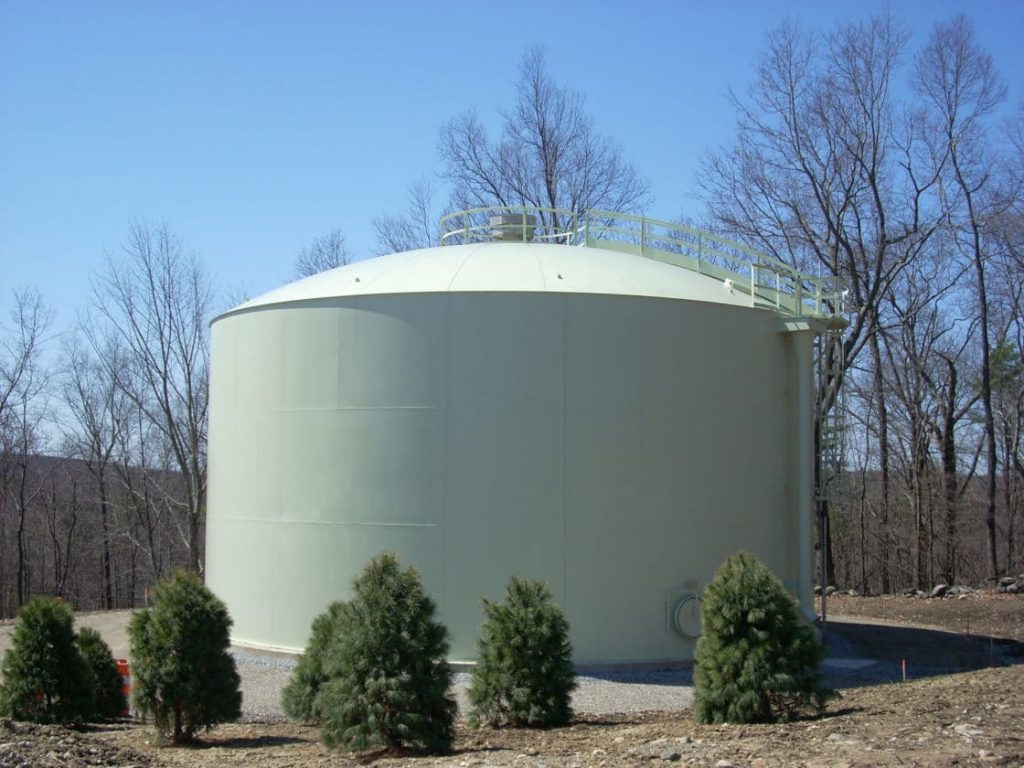
Tata & Howard provided construction administration, resident observation, and start-up services to the Milford Water Company for the construction of the Dilla Street Water Treatment Facility. The 5.2 mgd facility treats water from a combination of lake, river, and wells, utilizing dissolved air flotation (DAF) clarifiers and granular activated carbon (GAC) filters. The facility will replace the existing slow-sand and diatomaceous earth (DE) treatment currently utilized to treat the existing surface and groundwater sources, respectively. The facility was required to address and satisfy an Administrative Consent Order (ACO) issued by MassDEP.
Tata & Howard also completed design and oversight of a redundant cast-in-place chlorine contact tank, and has been contracted to provide engineering services for project review and construction oversight for the installation of raw water screens on intakes of both the lake and river sources. These improvements were mandated by MassDEP as part of the approval of the Dilla Street facility design.

Tata & Howard provided construction administration, resident observation, and start-up services to the Milford Water Company for the construction of the Dilla Street DAF Water Treatment Facility. The 5.2 mgd facility treats water from a combination of lake, river, and wells, utilizing dissolved air flotation (DAF) clarifiers and granular activated carbon (GAC) filters. The facility replaced the existing slow-sand and diatomaceous earth (DE) treatment previously utilized to treat the existing surface and groundwater sources, respectively. The facility was required to address and satisfy an Administrative Consent Order (ACO) issued by MassDEP.
Tata & Howard also completed design and oversight of a redundant cast-in-place chlorine contact tank, and has been contracted to provide engineering services for project review and construction oversight for the installation of raw water screens on intakes of both the lake and river sources. These improvements were mandated by MassDEP as part of the approval of the Dilla Street facility design.
Advanced condition assessment of cast iron water main samples and water infrastructure provides insight into the quality and reliability of a water distribution system. The goal is to be able to efficiently and effectively run the water distribution system by allocating capital to areas of the system that are in need of rehabilitation or replacement. Tata & Howard is a leader in condition assessment methods for water distribution system pipe assets.

In 2007, Tata & Howard began extracting one foot long cast iron water main samples ranging in diameter from 6 to 12 inches as part of a cleaning and cement lining water main rehabilitation project. Since then, we have evaluated a significant number of cast iron water main samples for several water distribution systems throughout Massachusetts and Connecticut, typically during a rehabilitation project, water main failure, or water main replacement project.
Sections are evaluated using several criteria:
- Pipe Class Estimation Based on Remaining Wall Thickness
- Visual Inspection
- Pipe Crushing ANSI A21.6-13 Yields Break Load of Sample
Samples are loaded, one at a time, onto a machine that monitors the application of load in pounds, and the load required to cause the main to break is then recorded. Additional visual inspections are also made and recorded.
- Remaining Factor of Safety Estimation
In the past, cast iron pipe manufacturers incorporated a 2.5 minimum factor of safety (FOS) to the crushing load necessary to break a water main. The manufacturer’s FOS can be compared to the crushing load that was measured at the materials testing facility, which then yields the estimated remaining FOS of the water main sample.
Condition assessment is beneficial in assisting a utility in the decision to rehabilitate a water main or schedule it for replacement, and in identifying asset classes that are candidates for replacement. The visual inspection provides an assessment of the quality of the water main, which assists in properly allocating capital funds to mains that are on the verge of failure or in need of rehabilitation.
Whitepaper:
Pipe condition assessment combined with break data for New England communities allows for continued analysis of problem pipes in distribution systems. This whitepaper outlines the research completed and the data collected to help pinpoint the next problematic pipe cohort. Read the complete whitepaper here.
Aquarion Water Company
Areas of service: Oxford, Millbury, Hingham and Hull, MA and Hampton, NH

Tata & Howard has been providing general engineering services to the Aquarion Water Company in Massachusetts and New Hampshire for the last five years. Our work has included the design of water mains and storage tanks, new source development, replacement well designs, hydraulic studies and Capital Efficiency Plans™.
As of 2019, We have completed or are currently completing Capital Efficiency Plans™ for each of the systems in Massachusetts and New Hampshire. Within the two states, Aquarion Water Company operates a total of approximately 430 miles of water main. Completion of the Capital Efficiency Plans™ has provided Aquarion with a basis for improvements throughout each of the systems. The analysis not only reviewed hydraulic considerations but included a detailed analysis of assets and critical components. By utilizing this approach, Aquarion Water Company was able to spend money effectively on upgrades to the system.
For example, as part of a hydraulic evaluation, it was recommended that Aquarion replace the water main on Mill Road to meet fire flow requirements in the eastern part of the system. After consideration of the age, material, and break history of the surrounding water mains, it was determined that from a capital efficiency standpoint, replacement of the water main on Pine Road would benefit Aquarion more than replacement of the water main on Mill Road.
The water main on Pine Road had reportedly experienced numerous breaks and would eventually require replacement in the near future. Installation of the water main on Pine Road allowed the Aquarion Water Company to meet the needed fire flow requirement, eliminate a problematic water main, and reduce the overall capital cost. All the studies included an analysis of the existing supplies versus the estimated future demands as well as storage capacity. The Hingham/Hull Water Distribution System Study included an analysis of potential water supply sources. Tata & Howard evaluated the potential of connecting to MWRA, buying water from Cohasset and drilling new wells within the Town. All options included potential costs for engineering, permitting and construction.
Tata & Howard completed a storage evaluation for the Hingham and Hull water systems. The purpose of the evaluation was to determine if the Strawberry Hill Tank was needed. Following a tank inspection, the tank was determined to be structurally deficient and needed substantial work to improve the integrity of the elevated tank. The Strawberry Hill Tank had a capacity of 0.51 million gallons and had an overflow elevation that was approximately 20 feet lower than the Turkey Hill Tank located in the same service area. The water in the Strawberry Hill Tank did not fluctuate and caused concern for contaminated water. Based on a storage evaluation and hydraulic analysis, it was determined that the Strawberry Hill Tank was not needed. The Aquarion Water Company subsequently removed the tank from the system.




